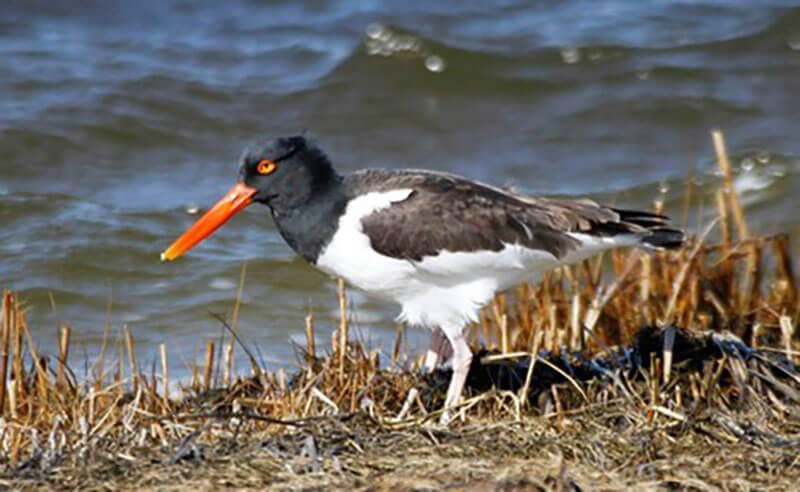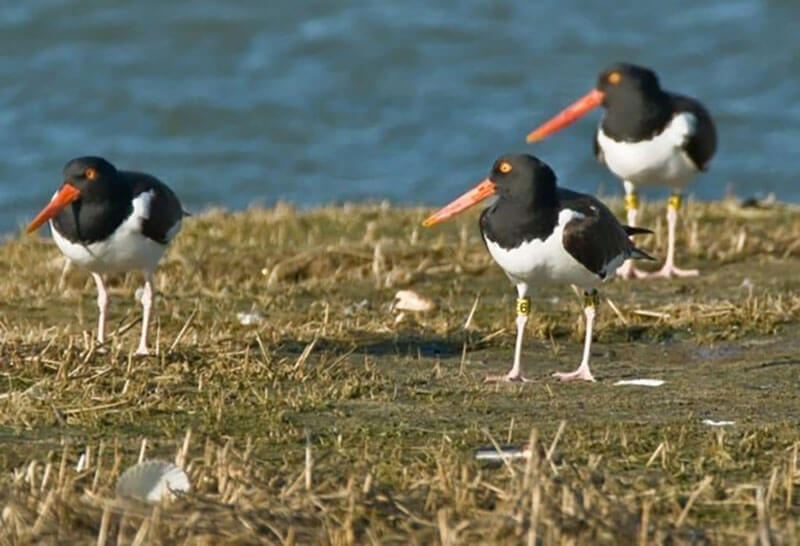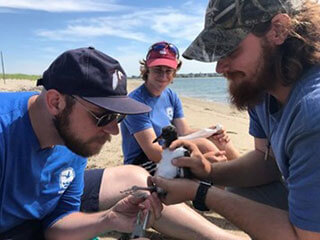Nantucket Island, located off the coast of Cape Cod in Massachusetts, is home to a variety of unique wildlife, including the American Oystercatcher. These distinctive birds are easily recognized by their black and white plumage, bright orange bills, and piercing calls.

The American Oystercatcher population on Nantucket was once threatened by habitat loss and overhunting. However, thanks to the efforts of organizations like the Nantucket Conservation Foundation, the population has rebounded in recent years.
Nantucket’s Oystercatcher Program
The Oystercatcher Program on Nantucket is a collaborative effort between the Nantucket Conservation Foundation and the Maria Mitchell Association to monitor and protect the American Oystercatcher population on Nantucket Island.
The program was established in response to concerns about the decline in the American Oystercatcher population on the island due to habitat loss, overhunting, and other human activities. The program’s goal is to promote the conservation of this iconic species and its habitat by implementing various monitoring and management strategies.
All About the American Oystercatcher
The American Oystercatcher is a large, distinctive bird found along the coasts of North and South America. It is easily recognized by its striking black and white plumage, long orange bill, and piercing calls.
Nesting starts in March. The American Oystercatcher is a ground-nesting bird that typically lays its eggs on sandy beaches, mudflats, or rocky shores. The birds generally breed in monogamous pairs, and both the male and female are involved in building the nest.
The nest of the American Oystercatcher is typically a shallow scrape in the sand or gravel, lined with bits of shell, pebbles, or other materials. The nest may be located in a variety of locations, including the beach above the high tide line, among rocks or boulders, or in the dunes.

American Oystercatchers usually lay 2-4 eggs per clutch, which are incubated by both parents for about 28-30 days. During the incubation period, the adults take turns sitting on the eggs, with one bird incubating while the other feeds and rests.
The American Oystercatcher is considered a species of high conservation concern due to its limited range and vulnerability to habitat loss, disturbance, and overhunting. In some areas, the population of American Oystercatchers has declined significantly due to human activities such as coastal development, dredging, and commercial fishing.
Strategies of the Oystercatcher Program
One of the key strategies used by the Oystercatcher Program is to monitor the breeding success of the American Oystercatcher population on Nantucket. This involves identifying and mapping the nests, monitoring the hatching and fledging success of the young birds, and tracking the movement patterns of the adult birds.
To protect the nesting sites, the Oystercatcher Program sets up exclusion areas around the nests to prevent disturbance from humans and predators. This involves roping off the areas around the nests and posting signs to inform people of the presence of nesting birds.
Another strategy used by the Oystercatcher Program is to engage in public outreach and education to raise awareness about the American Oystercatcher population and its habitat. This includes offering educational programs and guided tours to visitors, as well as working with local schools and community organizations to promote conservation and environmental stewardship.
The Oystercatcher Program also collaborates with other conservation organizations, researchers, and government agencies to share data and coordinate conservation efforts. This helps to ensure that the American Oystercatcher population on Nantucket is being protected in the most effective and efficient way possible.
The strides taken to save the iconic birds are impressive.
All about the Nantucket Conservation Foundation
The Nantucket Conservation Foundation is a nonprofit organization dedicated to protecting the natural resources and wildlife of Nantucket Island. In addition to supporting research and conservation efforts for the American Oystercatcher, the organization also works to protect other species like the piping plover, roseate tern, and eastern box turtle.
The Nantucket Conservation Foundation manages over 9,000 acres of conservation land on Nantucket, including beaches, wetlands, and forests. They offer educational programs and guided tours to visitors, as well as volunteer opportunities for those interested in conservation work.
Thanks to the efforts of the Nantucket Conservation Foundation and other conservation organizations, the American Oystercatcher population on Nantucket has increased in recent years, providing hope for the continued survival of these unique birds.
What You Can Do to Help: Report Resightings
 Reporting resights of the American Oystercatcher is important for the conservation and management of this species. Resighting refers to the observation of an individual bird that has been previously banded or marked with a unique identifier, such as a leg band or radio transmitter.
Reporting resights of the American Oystercatcher is important for the conservation and management of this species. Resighting refers to the observation of an individual bird that has been previously banded or marked with a unique identifier, such as a leg band or radio transmitter.
Resighting data can provide important information about the distribution, movements, and survival of American Oystercatchers, which can help conservationists and researchers make informed decisions about how to protect this species and its habitat.
Some of the key reasons why reporting resights is important include:
- Population monitoring: Resighting data can be used to estimate population sizes, demographic trends, and changes in distribution over time. This information is critical for assessing the status of the species and determining whether conservation efforts are effective.
- Habitat management: Resighting data can help identify important breeding, wintering, and migration areas for American Oystercatchers. The gathered data helps with habitat management and conservation efforts to protect and enhance these critical areas.
- Threat assessment: Resighting data can provide important insights into the threats that American Oystercatchers face, such as predation, disturbance, and habitat loss.
- Research: Resighting data can be used to address a wide range of research questions related to ecology, behavior, population, and the birds lifestyle habits.
Overall, reporting resights of the American Oystercatcher is an important contribution to the conservation and management of this species. By sharing information about these birds, we can better understand their needs and work together to protect them for future generations.



